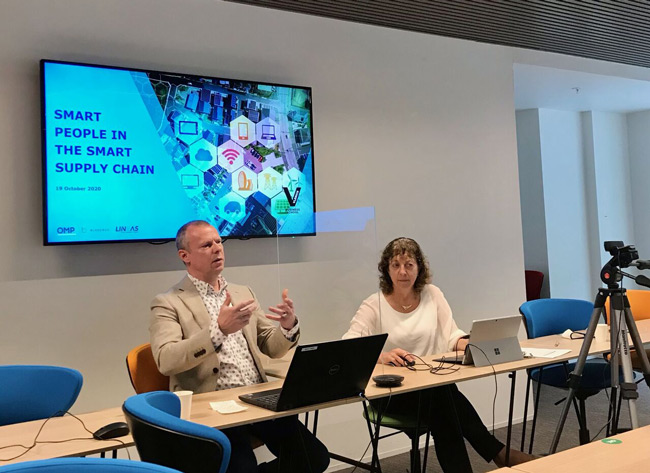
The role of XAI in supply chain
Ioana Simon - October 26, 2020

How can people learn to trust the systems that are supposed to make their lives easier?
That was one of the big issues discussed at the recent 'Smart People in the Smart Supply Chain' virtual conference hosted by Vlerick Business School in partnership with OMP, bluecrux and Lineas. Supply chain experts from all over the world dialed in for an afternoon of talks and workshops presented by leading voices from both academia and industry. The overarching topic of the conference was Industry 4.0 — or how technologies like AI and other sophisticated algorithms can be harnessed to shape the future of supply chain planning.
Can humans trust machines?
Human-machine trust is a very important issue. At its most benign, distrust leads to avoidance. In the supply chain sector this might result in a reluctance to implement new technologies. At its most destructive, distrust can generate aversion or even fear. Are these new technologies really helping us or are they about to steal our jobs?
Blog post

In their talk entitled “In Planning We Trust”, Professor Karlien Vanderheyden of Vlerick Business School and Cristina Danila of Janssen Pharmaceutica conjectured that lack of trust can be caused by a combination of three aspects: human factors, such as users having unclear expectations of the system; machine factors, such as lack of transparency about what the system can do; and contextual factors arising from insufficient or poor management communication.
To eliminate these factors it’s clear we have to figure out how to let algorithms explain themselves in ways that humans can understand and appreciate. Professor Ann Vereecke of Vlerick Business School and Ghent University, and Kris Dockx of OMP, referred to the concept of XAI, or explainable artificial intelligence, as an answer to this challenge. According to Professor Vereecke, “Explainable AI consists of a set of tools and techniques that help humans not only to understand but also to interpret the recommendations that were made by the AI model.”
Blog post
How does XAI work?
Kris Dockx then went on to demonstrate how OMP brings XAI to life. OMP consultants use a three-step approach to getting end users to trust the complex solver algorithms behind the automatic optimization of supply chain plans:
Blog post
- The first step is explaining how the algorithm works in theory. Because procedures that assign stock to demand can sound quite dry and boring, the explanation is made more engaging. This can be achieved by comparing it to something everyone finds way more interesting — in this case, online dating. And so, instead of assigning stock to demand based on abstract KPIs, Kris Dockx explains the algorithm through the device of assigning lonely men to single women by hair color preference.

Blog post
- Step two is explaining what the algorithm does in practice. The user sees every move the algorithm makes, and why, with the help of a video animation.
- Step three is based on the user being able to correct the algorithm when it does something wrong. When the algorithm is told which moves we like or dislike, the solver learns to take this into account for next time, and therefore becomes more intuitively understandable and controllable.
The relationship between human and machine can be a happy one. But as in any relationship, two things are essential: understanding and trust. And, as in the best relationships, these have to be worked on.
What will supply chain planning look like in the future?

Ioana Simon
Supply Chain Consultant
Biography
Ioana is a consultant in the Solver team. There, she primarily works on the advanced S&OP solver and collaborates closely with project teams to ensure customers get the most out of OMP’s vast solver offering. She is passionate about mathematics and dislikes writing her own biography.





